The CB300 is behind us, and our coverage of it here on the Dog Log is complete. It’s time to start focusing on the Denali Doubles race, coming up on February 11th.
A number of you have asked for some explanation of the Denali Doubles. The truth is, we’re really just starting to get our heads around it and develop our strategies. It’s a new race, and there are some interesting quirks to it. We promise to explain it as best we can, as fast as we can.
 One thing is for sure, a Denali Doubles team includes twenty dogs! We thought it might be good to start you off with some idea of what that looks like, so Aliy recorded this video. She does a great job as always of narrating it, but it’s a little hard to hear over the dogs barking. Here are two main points to watch for:
One thing is for sure, a Denali Doubles team includes twenty dogs! We thought it might be good to start you off with some idea of what that looks like, so Aliy recorded this video. She does a great job as always of narrating it, but it’s a little hard to hear over the dogs barking. Here are two main points to watch for:
1) The front 12 dogs are all racing veterans. They have lots of experience and what we call “manners.” Once they are hooked up, they mostly sit patiently in line and wait for the signal to get going. The rear 8 dogs are mostly young, inexperienced dogs. They definitely do not have “manners.” It’s a great contrast to see so clearly.
2) A twenty dog team is, as Aliy puts it, “a little bit to handle.” Even in the still photo above, you can barely see all the dogs, let alone be able to see any detail about what’s going on with your leaders. Keep in mind that they are about 80 feet in front of you, farther than the length of the longest semi-truck on the road. This is where all the time that Aliy spends with her dogs really shows up. She has to be able to tell what’s going on with each of them just by glimpsing how they are running. She cannot rely on being able to clearly see details.

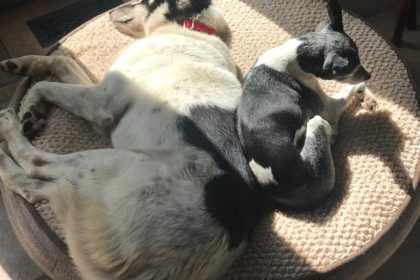



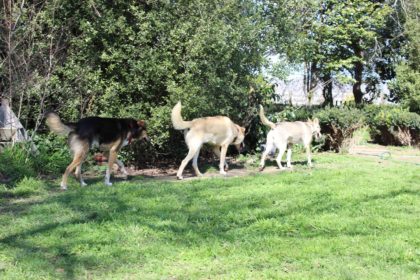
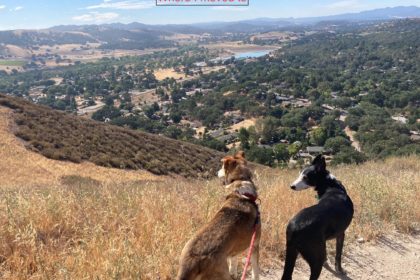
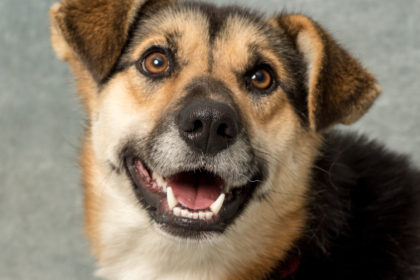
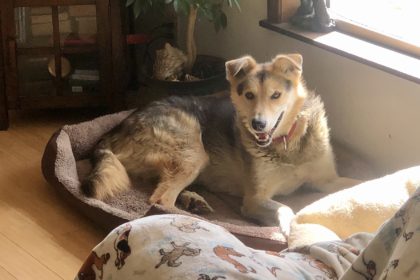
I think this brings up an interesting trade-off, actually. I assume the larger teams for this race are to accommodate the extra weight of a second musher and sled, so in that sense it is a dog-friendly choice to spread the work out a bit more. Yet at the same time, it does make it awfully difficult for the musher to keep tabs on everyone. If someone near the front had a minor issue (sore shoulder, or whatever), would Aliy be able to see that that from so far back?
Eagerly watching to see your plan and great to 'drive' this team with you… wow, right with you.
How fast can you go with 20 dogs? Do you have your partners picked yet?
Wow! So will Aliy and Allen both be running 20 dog teams? That must be nearly every dog in the kennel!
sarsmile — I know it may be hard to believe, but weight really isn't an issue with these dogs. We routinely use 8-10 dogs to pull two people and/or two sleds when we take visitors for rides… Even fewer dogs can happily and comfortably pull the sleds. I can't really say it's a "dog-friendly choice to spread the work out" because I honestly don't think the dogs even notice.
I do think it is more of a "safety" factor in this race. Because the course is from Cantwell to Paxson and back along the remote and mostly unsupported Denali Highway, the only place to drop dogs is in Paxson. If any get dropped there AND any need to be taken out of the team and carried in the sleds, you want to have PLENTY of dogs. Twenty dogs is indeed PLENTY of dogs to cover any contingency.
If you read the rules, you will see that there is also provision for "leaving" — not "dropping" — dogs at Alpine Creek and Maclaren on the outbound leg and picking them up on the way back… I wouldn't be at all surprised if mushers "leave" a few dogs on the way out and pick them up to be "fresh" for the final push to the finish… Like i've said, there are some interesting "quirks" to this race. Either way, please be assured that even the 12 dog "minimum" is PLENTY of dogs… They are unbelievably strong and entirely comfortable pulling much more than they will in this race.
As for difficulty "keeping tabs" on them… it's not as much of a problem as you might think. Dog "issues" are generally either "obvious" and "urgent" — rare "injuries" that are immediately visible and the musher will stop to attend to them — or much more "subtle" and "minor" — discomforts that do not require any kind of immediate intervention and there is plenty of time to notice them along the way and to examine them at rest stops.
In other words, if a dog has a real "problem" it will be obvious no matter how many dogs there are and will be tended to immediately. If, as you posit, a dog has a minor issue like a sore shoulder, it will show up in subtle changes in the dog's gait, ear position, tail position, etc. You or I might not notice, but Aliy and Allen have such intimate knowledge of the dogs that they notice anything out of the ordinary, no matter how many dogs they have.
This is one of the reasons that SP Kennel does not "lease" dogs to other mushers, or let anyone who does not have full, intimate knowledge of the dogs run them unsupervised. It really doesn't matter how many dogs you have — 2 or 20 — you either "know" the dogs or you don't.
KB — I know it makes sense intuitively: More dogs means more power means more speed. Right? Wrong.
Dogs run as fast as they want to and are conditioned to, not as fast as they can. I honestly don't know how fast the dogs "could" run — probably 20 mph or so — but I do know that they are trained and conditioned to run at speeds of 8-12 mph.
The instinct of the lead dogs sets the "want to" pace, and the many hours on the training trails sets the "conditioning" pace. Instinct and muscle memory set the pace, not any kind of "power to weight" ratio.
So, the teams will run in the same 8-12 mph range with 20 dogs as they would with half that many.
Yes, we have the partners lined up. No, I cannot tell you right now because it would disclose a key part of our strategy. Sorry!
Emily — Yup… Just about every racing dog we have in the kennel!
In reading the rules earlier, I remember a reference to ski-jour teams as part of the mix, i.e., allowing differing team configurations
Did I dream that? Mabye I should go back and reread that section – but how could that work in competing with other "configurations". It doesn't seem like an equitable comparison, but …
I was curious who the second mushers where before and now I'm REALLY curious. Will we just find out on race day or before that?
So how many miles does the Denali Doubles cover? How many checkpoints? Will Allen and Alie run as a team or on opposite teams?
Wow, 20 dogs running! And I am worried about walking my 3 in the Winterfest parade next week…..
Forty dogs in the race… wow.
Where do you-all fall in terms of racing kennel size–bigger than most? Smaller than most?
We are a small kennel… a VERY small kennel compared to those with whom we regularly compete. We have 48 racing dogs compared to about twice that number in other kennels racing the same number of teams. It means we have fewer dogs to pick our "best" teams from, but it matches our "dog first" principles. For the Denali Doubles it can almost be said that we will "leave no dog behind!"